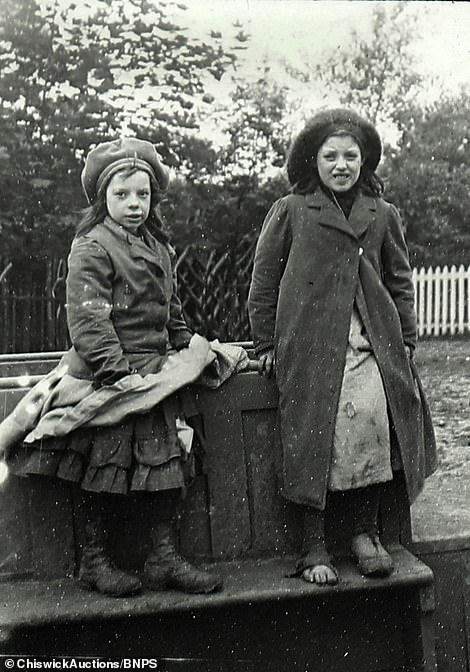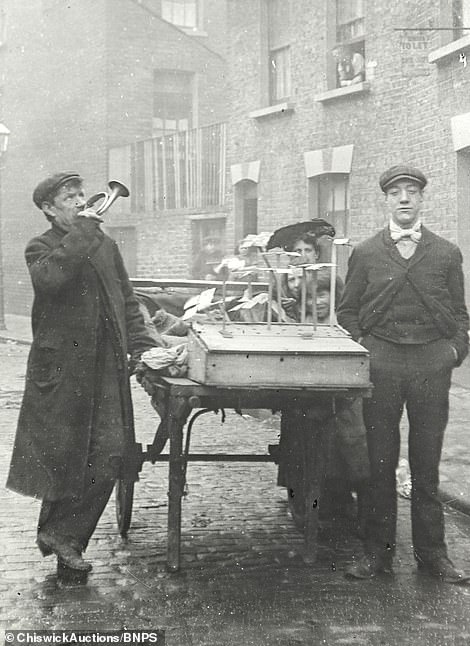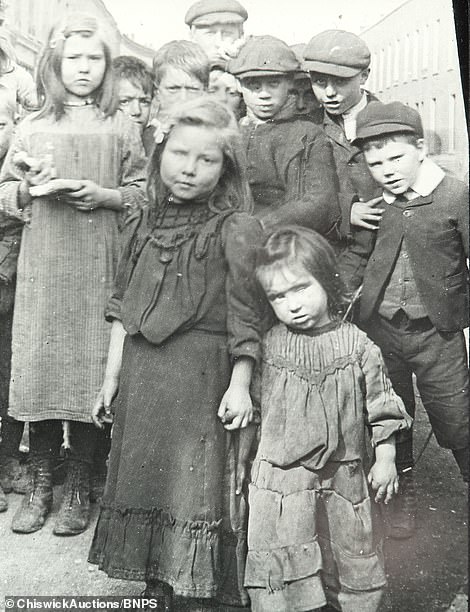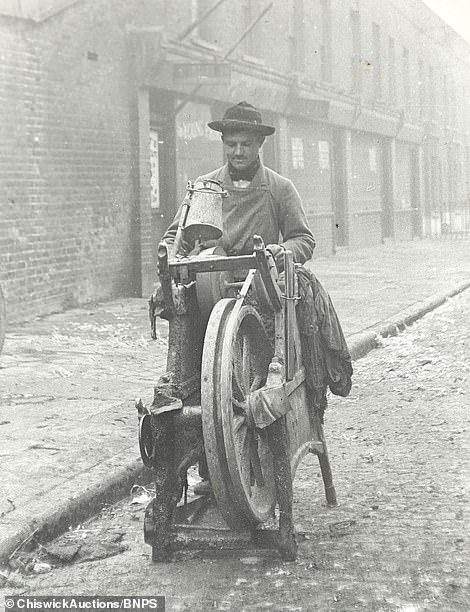Part of a collection of photos, all dated 1890. They were taken in East London during that year, but the photographer was unknown and not credited.
(Some of the photos can be further enlarged by clicking on them.)
Factory girls outside a cafe during their meal break. They wore thick white aprons to protect what were likely to be the only clothes they owned.

Barefoot boys photographed in midwinter.

Old women selling used clothing and material in Chrisp Street Market.

The girl on the right has lost one of her only pair of boots, so is walking around wearing just one. The soiled aprons under their coats suggest that they were both employed in a factory. Child labour was still common then.

A makeshift baby carriage with no wheels. It was just dragged around.

This boy was described as an ‘Incorrigible Beggar’.

Rag and bone collectors announcing their intention to buy those items by blowing a bugle. The children in the background were excited to be included in the photo.

Members of an East London Boy’s Brigade band. Being able to wear a smart uniform and be a part of such an organisation was a temporary relief from their hard lives.

Local people posing on Dorset Street, in Spitalfields. This was known as one of the most lawless streets in London, and was frequented by pimps and prostitutes. It was also one of the favourite haunts of Jack The Ripper. He murdered Mary Kelly in Millers Court, just off Dorset Street. And one of his other victims, Annie Chapman, lived in a cheap lodging house on Dorset Street before he killed her in nearby Hanbury Street.

Curious children crowding around the photographer. Despite their poverty and living conditions, they were mostly well-dressed.

A street sharpener. He would walk around hoping to be paid to sharpen knives and scissors. Even when I was a child in the 1950s, men like him were still seen everywhere. Working people could not afford to replace blunt knives or scissors, so it was economical to have them sharpened regularly.

This man is what passed for ‘Pest Control’, in 1890. He carried a placard announcing his services, and at a time when bedbugs, rats, cockroaches, and other pests were abundant, he would be in high demand.













